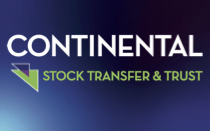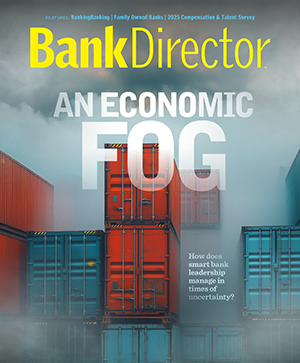Karri is responsible for strategically growing the business by nurturing relationships to offer issuers tailored, flexible, and thoughtfully designed services. She also spearheads Continental’s brand and marketing initiatives to enhance customer awareness and drive industry engagement. Karri has over 35 years of service in the industry, notably 23 years with Wells Fargo. Before assuming her role in strategy and growth focused positions, she held management roles in sales, client administration, product enhancement, stock plan administration, and corporate trust/escrow services.

Virtual Investor Meetings Are Now a Boardroom Priority
Forward-thinking banks are using virtual meetings to meet evolving expectations from investors, regulators and governance bodies.
Brought to you by Continental Stock Transfer & Trust

As digital transformation reshapes every corner of the banking industry, one area that continues to gain traction at the board level is how shareholder meetings are conducted. What began as a pandemic-era workaround has become a boardroom expectation. Virtual annual shareholder meetings are here to stay.
These meetings offer more than just convenience — they provide an opportunity to enhance transparency, increase access and streamline compliance. Banks now face the question not of whether to use virtual platforms, but how to implement them effectively and responsibly.
1. Virtual Meetings Widen Shareholder Access
In-person meetings often limit participation to local shareholders or those able to travel. Virtual meetings remove that barrier. A recent analysis of meeting data from Continental Stock Transfer & Trust Co. found that in 2023 over 80% of shareholders who attended virtually opted to use a livestreaming feature, underscoring the growing preference for digital access.
For directors and executives, this expansion of reach brings value: broader engagement from retail investors, long-term shareholders and even analysts who otherwise wouldn’t attend.
2. Governance and Compliance Are Easier to Manage
Virtual platforms allow banks to maintain, and even enhance, governance standards. With support from an experienced third-party provider, it’s easier to:
- Log attendance and confirm quorums.
- Facilitate controlled Q&A sessions.
- Deliver voting in a secure, auditable manner.
- Maintain accessible archives for replay and compliance.
While technology must be thoughtfully deployed, many institutions find that virtual meetings improve procedural control compared to physical ones.
3. Meeting Formats Are Becoming More Sophisticated
Today’s virtual meetings aren’t basic conference calls. They’re integrated experiences that may include:
- Branded web portals with secure sign-in.
- Slide deck presentations broadcast in real time.
- Moderator-managed Q&A via web and phone.
- Options for video inclusion and transcription.
- Advance practice runs and live technical support.
Continental Stock Transfer & Trust Co. notes this shift: virtual meetings now rival in-person experiences in both quality and structure.
4. Earnings Calls Are Evolving Too
Shareholder meetings aren’t the only communication touchpoint getting an upgrade. Virtual earnings calls are also becoming more sophisticated, transitioning from telephone-only formats to full webcast models. Many now combine live audio with investor presentation slides, question management and replay access.
This digital evolution allows banks to proactively shape their investor messaging while reducing risk and increasing flexibility. As a result, earnings calls are emerging as key tools for building trust and confidence in today’s volatile market.
5. A Strategic Tool, Not Just a Technology Shift
Banks that approach virtual meetings and earnings calls as strategic communication events, rather than administrative requirements, are seeing long-term benefits. They’re able to shape the narrative, foster transparency and meet modern expectations for accessibility and clarity.
Ultimately, a well-executed virtual meeting reinforces good governance, builds stakeholder confidence and demonstrates the bank’s adaptability in a digital-first world.


